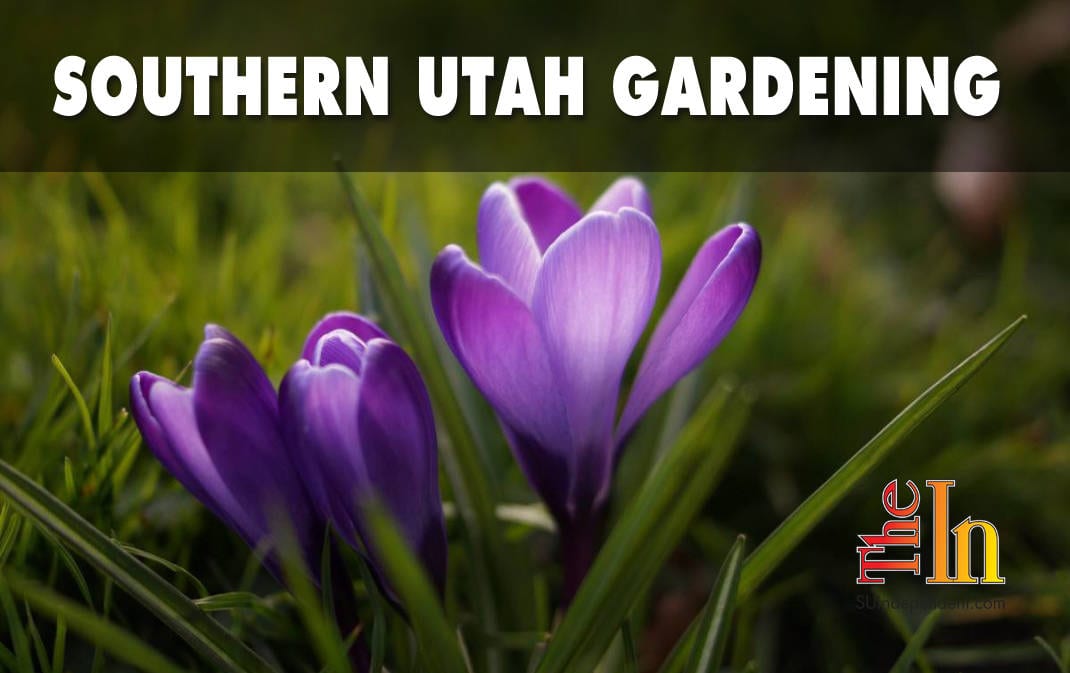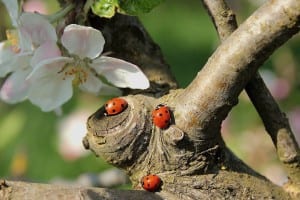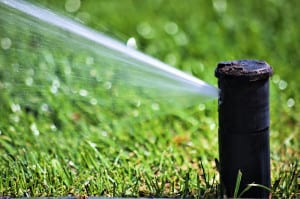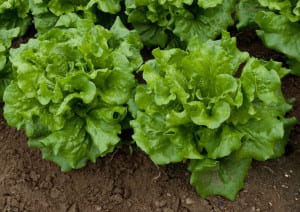 With temperatures in the 60s and 70s, you are probably wondering if the time has come to fertilize your lawn and garden. It may be just a little early. But once March arrives in St. George, I cannot resist the urge to start fertilizing. My mind’s eye is filled with the green of spring, and I know that fertilizer will speed along my garden’s growth and make that green a reality.
With temperatures in the 60s and 70s, you are probably wondering if the time has come to fertilize your lawn and garden. It may be just a little early. But once March arrives in St. George, I cannot resist the urge to start fertilizing. My mind’s eye is filled with the green of spring, and I know that fertilizer will speed along my garden’s growth and make that green a reality.
 There are many options for fertilizer out there. I prefer to use something organic or as natural as possible. Think of your lawn and garden as an ecosystem. You do not want to disturb or disrupt this ecosystem and throw things out of whack. You are simply contributing to the health of the ecosystem. Green and healthy lawns, trees and shrubs, and gardens that produce flowers, vegetables, and fruits are the goals. At the same time beneficials, like ladybugs and numerous organisms in the soil, continue doing their part keeping the ecosystem balanced and healthy. Organic and natural fertilizers will do just this. Synthetic fertilizers tend to really juice up the growth in your garden and can disrupt and damage the ecosystem. This can lead to uncontrolled pest populations and may put your plants at risk for disease by damaging the life in the soil. They also increase the need for water to sustain the growth they produce. The last thing we want to do is use more water than necessary to keep our gardens healthy.
There are many options for fertilizer out there. I prefer to use something organic or as natural as possible. Think of your lawn and garden as an ecosystem. You do not want to disturb or disrupt this ecosystem and throw things out of whack. You are simply contributing to the health of the ecosystem. Green and healthy lawns, trees and shrubs, and gardens that produce flowers, vegetables, and fruits are the goals. At the same time beneficials, like ladybugs and numerous organisms in the soil, continue doing their part keeping the ecosystem balanced and healthy. Organic and natural fertilizers will do just this. Synthetic fertilizers tend to really juice up the growth in your garden and can disrupt and damage the ecosystem. This can lead to uncontrolled pest populations and may put your plants at risk for disease by damaging the life in the soil. They also increase the need for water to sustain the growth they produce. The last thing we want to do is use more water than necessary to keep our gardens healthy.
 Think of fertilizer like choosing a really great multivitamin or protein shake for your garden verses using steroids. Initially, you have great-looking results from the steroids, but the long-term effects are not healthy. For instance, in southern Utah we have problems with lawn fungi during late summer. When the temperature and humidity levels are high (for southern Utah, anyway), the cultural things we do to contribute to lawn fungus problems are over-watering and over-fertilizing. These things in abundance mess up the lawn ecosystem and make it susceptible to fungi. Get the water under control, and use multivitamin-like fertilizer instead of steroids, and fungi will be a problem of the past.
Think of fertilizer like choosing a really great multivitamin or protein shake for your garden verses using steroids. Initially, you have great-looking results from the steroids, but the long-term effects are not healthy. For instance, in southern Utah we have problems with lawn fungi during late summer. When the temperature and humidity levels are high (for southern Utah, anyway), the cultural things we do to contribute to lawn fungus problems are over-watering and over-fertilizing. These things in abundance mess up the lawn ecosystem and make it susceptible to fungi. Get the water under control, and use multivitamin-like fertilizer instead of steroids, and fungi will be a problem of the past.
Two prepared, complete fertilizers that I like and that are available locally are Fox Farm products and Gro-Power products. Both of these contribute to soil health and garden ecosystems in a positive way and often add mycorrhizal fungi to your soil. Mycorrhizal fungi are like probiotics for the soil. They help roots take up water and nutrients more efficiently and create an overall healthier plant. You want these guys present if you want healthy soil, and healthy soil is key to having a beautiful lawn or successful garden in southern Utah.
Some folks like using composted manure for fertilizer. This is advised only if you are tilling it into a garden before planting and your manure is composted and not raw. Manure isn’t for top-dressing or fertilizing existing plants. Compost tea is another source of fertilizer for existing plants; however, that’s another article for another day.
 The brands of fertilizer I have mentioned above will have relatively low percentages of
The brands of fertilizer I have mentioned above will have relatively low percentages of
nitrogen, phosphorus, and potassium, or N-P-K. This is good! High percentages of these nutrients are found in synthetic fertilizers, and long-term use of these will compromise soil and garden ecosystem health and may lead to problems with pests and disease. You can choose an all-purpose fertilizer for use around your entire garden and lawn or choose something specific to what you are growing. If you are encouraging new green growth, you want a higher percentage of nitrogen. This the first number in the N-P-K series. If you desire flower and fruit growth, choose a fertilizer with a higher percentage of phosphorus. This is the second number in the N-P-K series. Phosphorus will also contribute to root growth and is often included in new plant-starter fertilizers. Potassium is the last number is the N-P-K series and contributes to stem strength and overall plant vigor. This percentage should be present in most fertilizers, especially those producing fruit and flowers that require strong stems to support them.
Most organic and natural fertilizers are labeled for monthly applications. If temperatures are over 85 degrees, always water your lawn or garden before applying fertilizers. Then water thoroughly after all fertilizer applications. Always follow label directions for the very best results.
This article may stir up a bunch of questions regarding fertilizer. However, try not to overthink it. Simply choose an all-purpose fertilizer and apply it following the label directions. Water your garden and let nature do the rest … well, except for weeding, trimming, and harvesting. Really, it isn’t scary, even during the summer, to fertilizer your lawn or garden. Our southern Utah gardens need a dose of something healthy, and you have the power to give it to them. Get outside, and welcome to spring gardening!



